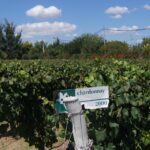Chardonnay is easily one of the most famous wine grapes grown around the world. The wine is the backbone for Champagne and a reason why California became so famous. It has even most likely saved a winery from death more than once. But many turn up their noses at the humble grape. Still, winemakers are looking for Chardonnay perfection. That perfection is White Burgundy.
Burgundy, or Bourgogne if you’re fancy, is one of the best regions to fully understand terroir. With vineyards mostly full of Pinot Noir and Chardonnay, your baseline is constant. This makes all of the other variables and winemaker manipulations more evident. The first step in understanding terroir through the lens of White Burgundy is by trying wines from different sub-regions. Start with the three easiest ones: Chablis, Côte de Beaune, and Mâconnais. If you’re looking to keep costs down, look for Village wines instead of Grand Cru or Premier Cru, which are considered higher quality.

Chablis: This is the most northern area of Burgundy and incredibly close to Champagne, so close that the climate (cooler) and soils are extremely similar (mostly chalky white limestone). Generally, Chablis wines will be unoaked, which allows Chardonnay’s crisp fruit and subtle white flower aromas to come through. The acidity is great for cutting through richer foods like goat cheese and foie gras. Domaine Christian Moreau, Jean-Paul & Benoît Droin, and Domaine Philippe Goulley are great bottles for under $30. Or you can go nuts with the 2014 Vincent Dauvissat ‘Les Clos’ Chablis Grand Cru ($250).
Côte de Beaune: Going south, you pass through Dijon and another sub-region, Côte de Nuits, before entering Côte de Beaune. This is home to most of the great high-end Chardonnays. Here, the winemakers have perfected making Chardonnay richer with apple, pear, white flowers, and soft grassy flavors. A good bet is Louis Jadot Beaune Aux Cras; it’s a Premier Cru for around $60.
Mâconnais: The most southern region of Burgundy is the warmest. This Chardonnay becomes riper with aromas of stone fruits, honey, tangier citrus, and herbal appeal. It can get very serious with their Pouilly-Fuissé, but most have cheaper price points despite the winemakers being just as talented as their neighbors to the north. Great bottles of Chanson Pere & Fils Viré-Clessé and Domaine des Valanges Saint-Véran Les Cras will each set you back $20.
Bourgogne Blanc: Producers can also have their wines fall into the classification of Bourgogne Blanc, which means it can come from anywhere in the region of Burgundy. These wines can be harder to perfect as it requires the proper blending of grapes from different vineyards. The 2014 Domaine Vincent & Sophie Morey is good for the $20 range, while the 2013 Domaine Jean-Philippe Fichet Vieilles Vignes is wonderful for the $30 range.



